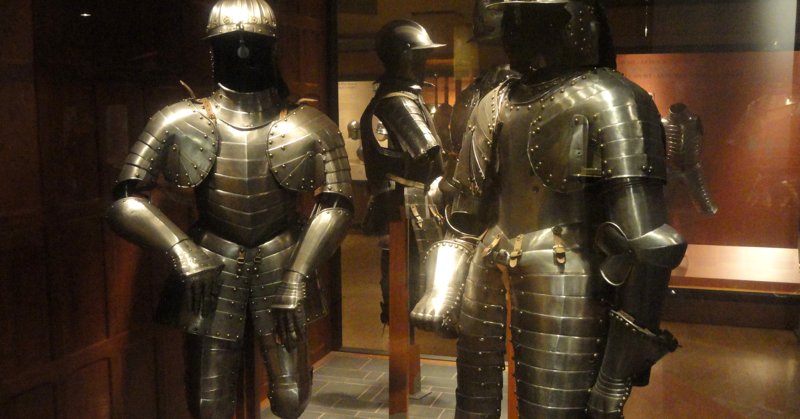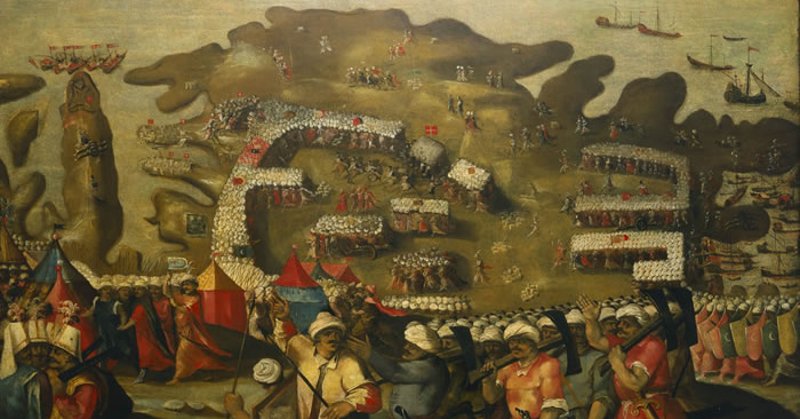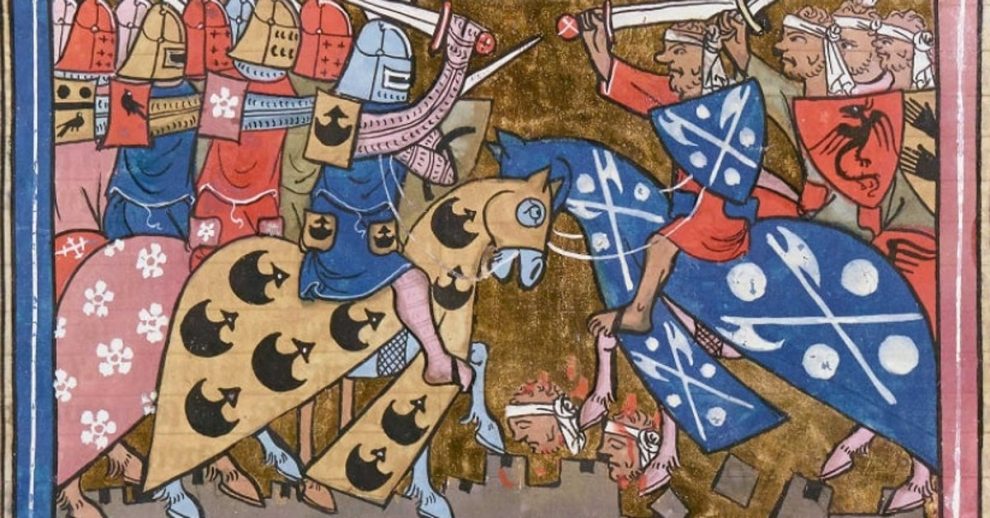For centuries, the mounted knight stood as a symbol of strength, chivalry, and noble warfare. Originating in early medieval Europe, knights trained from childhood in swordsmanship, horsemanship, and the code of chivalry. While often romanticized in legend, real knights were elite warriors forged through brutal discipline. The Crusades, launched at the end of the 11th century, elevated their status as they joined holy wars across the Middle East, leaving both glory and devastation in their wake. Religious orders like the Knights Hospitaller and Teutonic Knights emerged, blending monastic vows with military campaigns.
Yet knights weren’t the only professional warriors of the age. Across Europe and beyond, mercenaries—fighters for hire—played a pivotal role in shaping conflicts, often driven by coin rather than cause. These freelance warriors, including the infamous Catalan Company, brought both fierce skill and unpredictable loyalty to the battlefield. From bizarre battlefield tactics to deadly betrayals and political intrigue, the true world of medieval warfare was far stranger and more brutal than fiction. What follows are 25 eye-opening facts that pull back the curtain on the knights, crusaders, and mercenaries who shaped history in steel and blood.
Knights’ Intense Training Regimen

1. Knights trained rigorously in their armor, even adding weights to their swords to enhance their combat skills. This intense regimen was crucial for building strength and endurance. Remarkably, one knight demonstrated his agility by climbing a 60-foot ladder in full armor, relying solely on his hands without any foot support.
2. Contrary to popular belief, knights in the Middle Ages, clad in full plate armor, maintained impressive agility. They could climb, run, roll, and wrestle with relative ease, despite the armor’s weight. This capability was essential for their effectiveness on the battlefield, allowing them to engage in dynamic combat maneuvers.
3. The tradition of driving on the left side of the road originates from Medieval England, where knights rode their horses on the left. This positioning allowed their sword hand to be ready for combat against enemies. Today, most countries that drive on the left were once English colonies that have still preserved this historical practice.
4. The Knights Hospitaller, one of the Catholic military orders active during the Crusades, continues to exist today. Remarkably, at one point, they even maintained an air force.
5. After capturing Jerusalem in 1099, Crusaders brutally massacred the Jewish and Muslim populations, including women and children. The violence was so extreme that historical accounts describe Crusaders wading in blood up to their ankles.
6. One theory of the modern military salute traces back to France, where knights would lift their visors with their free hand to reveal their faces in respect. This gesture, resembling today’s salute, symbolized mutual recognition and honor among knights.
7. Drawings depicting battles between knights and giant snails frequently appear in the margins of 13th and 14th-century texts. Despite their prevalence, the meaning behind these illustrations remains unknown.
8. In 1305, after two years of employment fighting the Turks, the Byzantine emperor betrayed the Catalan mercenary company, attempting to annihilate them. In retaliation, the mercenaries unleashed widespread destruction. Their actions were so severe that the monks of Mount Athos did not lift their ban on Catalan citizens until the year 2000.
9. In 1314, two Norman knights, Gautier and Philippe d’Aunay, were found guilty of lèse majesté for having affairs with the daughters-in-law of King Philip IV of France. As punishment, they were castrated and subjected to horrific tortures – drawn, flayed alive, doused with molten lead, broken on the wheel, beheaded, and hanged. The princesses involved, Margaret and Blanche of Burgundy, had their heads shaved and were imprisoned for life.
10. In 1621, the Dutch employed Japanese mercenaries to eliminate 40 inhabitants of Bandaneira Island, a valuable source of nutmeg. Of the island’s 12,000-15,000 residents, only about 1,000 survived or were forced to leave. This violent act enabled the Dutch to establish a monopoly on the lucrative nutmeg trade.
Ancient Castle’s Unpleasant Secrets

11. During the Third Crusade in 1191, King Richard I of England captured Cyprus and ordered the construction of Saranda Kolones, a castle at the island’s western port, to defend its harbor. Though the fortress was only occupied for about 30 years before being destroyed by an earthquake, archaeologists recently discovered a well-preserved latrine still containing crusader feces. Analysis revealed a high concentration of whipworm and roundworm eggs, indicating that the garrison suffered from severe intestinal parasitic infections, likely worsened by poor hygiene, famine, and the use of human waste as fertilizer-conditions that could have contributed to widespread malnutrition and death among the crusaders.
12. The Crusaders planned to finance the Fourth Crusade (1202-1204) by first stopping in Constantinople to assist in a coup. When the new Byzantine emperor failed to compensate them fairly, they seized control of the city and its surrounding territory. This led to the establishment of the short-lived Latin Empire, which lasted from 1204 to 1261.
13. In 1209, crusaders laid siege to Béziers, France, because many citizens were deemed heretics. Before the attack, the army sought guidance from the Pope’s ambassador on distinguishing heretics from Catholics. He infamously replied, “Kill them all; let God sort them out.” Consequently, the crusaders killed all 20,000 inhabitants.
14. During the Turkish siege of Vienna in 1683, the largest cavalry charge in history took place. Spearheaded by 3,000 winged knights, 20,000 Polish and German cavalrymen charged and routed the Ottoman line. This decisive action ended the Ottoman threat to Christian Europe, marking a turning point in the conflict.
15. Before the Crusades, knighthood in Normandy held little social status. Knights were often poor and “land-hungry,” with the title merely representing professional warriors who could afford a warhorse. However, the Crusades elevated their status, transforming knights into esteemed figures in medieval society.
16. Mechanical prosthetics date back to the 16th century, when wounded knights required mechanical fingers to grip their swords or lances. These early devices were innovative for their time, allowing injured warriors to continue fighting.
17. In the 6th century, during the reign of King Jinheung of the Silla Kingdom, an elite group of young women knights known as the Wonhwa (“Original Flowers”) was established. These women were selected for their beauty and virtue, and they received training in ethics and the arts. However, after a tragic incident, the Wonhwa were disbanded. Subsequently, the Hwarang (“Flowering Knights”) were formed as an all-male youth warrior group. Despite the change in gender composition, the Hwarang retained the floral symbolism in their name. They were trained in martial arts, music, philosophy, courage, and selective killing.
18. Medieval warfare included a dagger specifically designed for finishing off wounded knights, known as the misericorde. The name, derived from Latin, means “mercy,” reflecting its purpose. Knights used this dagger to deliver a swift, humane end to their suffering opponents on the battlefield.
19. The Battle on the Ice, also known as the “ice massacre,” is the only recorded instance of a full-scale battle on a frozen lake. During this 1242 conflict, the Teutonic Knights suffered a dramatic defeat when the ice gave way beneath their heavily armored soldiers.
20. The “Pilgrim Army,” a group of 15,000 crusaders, was blown off course en route to the Holy Land and ended up in Portugal. There, the king convinced them to help defeat the Moors in exchange for anything they could plunder. Many of these crusaders chose to retire in Lisbon afterward.
Intimidation Tactics at Malta

21. During the Siege of Malta in 1565, the Ottoman Turks attempted to intimidate the Knights Hospitaller by executing prisoners and floating their bodies into the bay on crucifixes. In response, the knights decapitated their own prisoners and used cannons to launch the severed heads into the Turkish camp.
22. In the 1700s, King Louis XIV and other men began wearing high heels as a status symbol. As their popularity grew, a competition for increasingly higher heels emerged, prompting regulation. Commoners were limited to ½ ½-inch heels, the bourgeois to 1 inch, knights to 1½ inches, nobles to 2 inches, and princes to 2½ inches.
23. The Sixth Crusade, which took place from 1228 to 1229, was largely conducted through diplomacy and involved minimal fighting. The Treaty of Jaffa in 1229 ceded control of Jerusalem to the Crusaders. Despite this diplomatic success, the treaty was met with widespread disapproval in both the Christian and Muslim worlds.
24. Due to the ineffectiveness of swords against plate armor, German knights developed a unique combat technique. They would grip the blade of their swords with both hands and use the pommel as a club when fighting armored opponents. This method, known as “half-swording,” allowed them to deliver more effective blows.
25. Knights were more effective in raiding and guerrilla warfare than in open-field battles. Contrary to popular belief, they were not the tanks of medieval times but rather functioned as special forces. Their mobility and tactical skills made them invaluable in smaller, strategic engagements.
Sources: 1, 2, 3, 4, 5, 6, 7, 8, 9, 10, 11, 12, 13, 14, 15, 16, 17, 18, 19, 20, 21, 22, 23, 24, 25










Add Comment